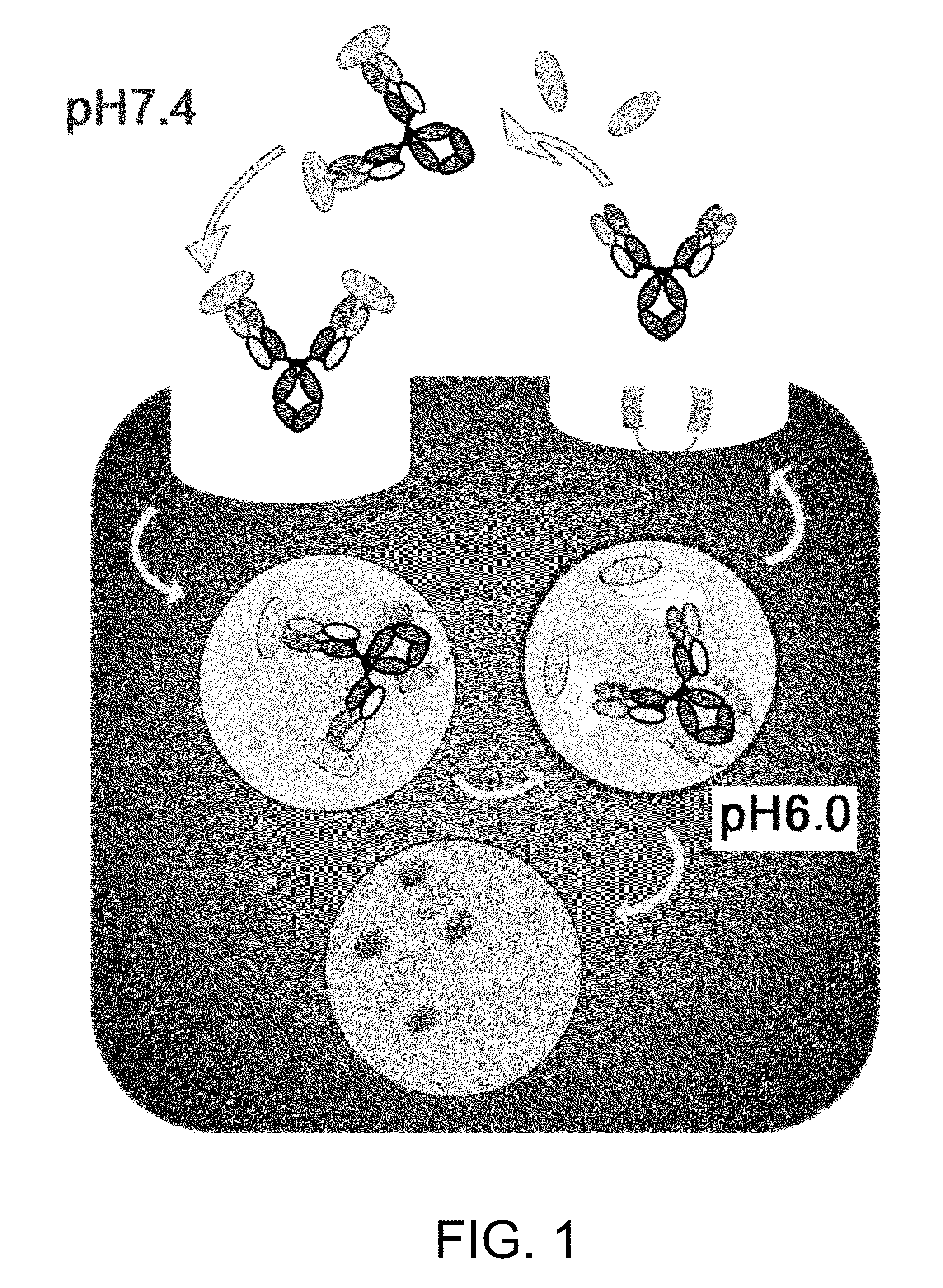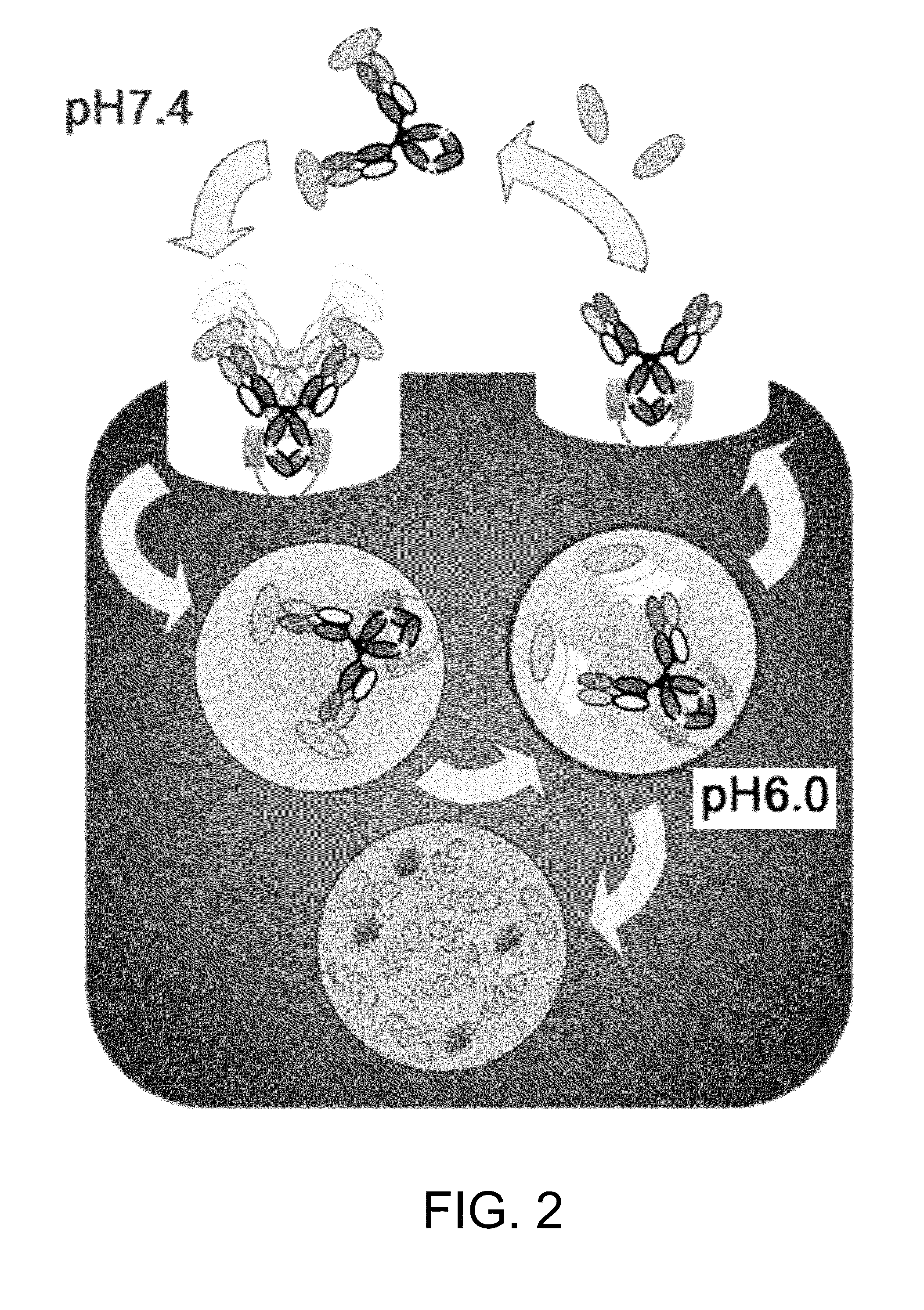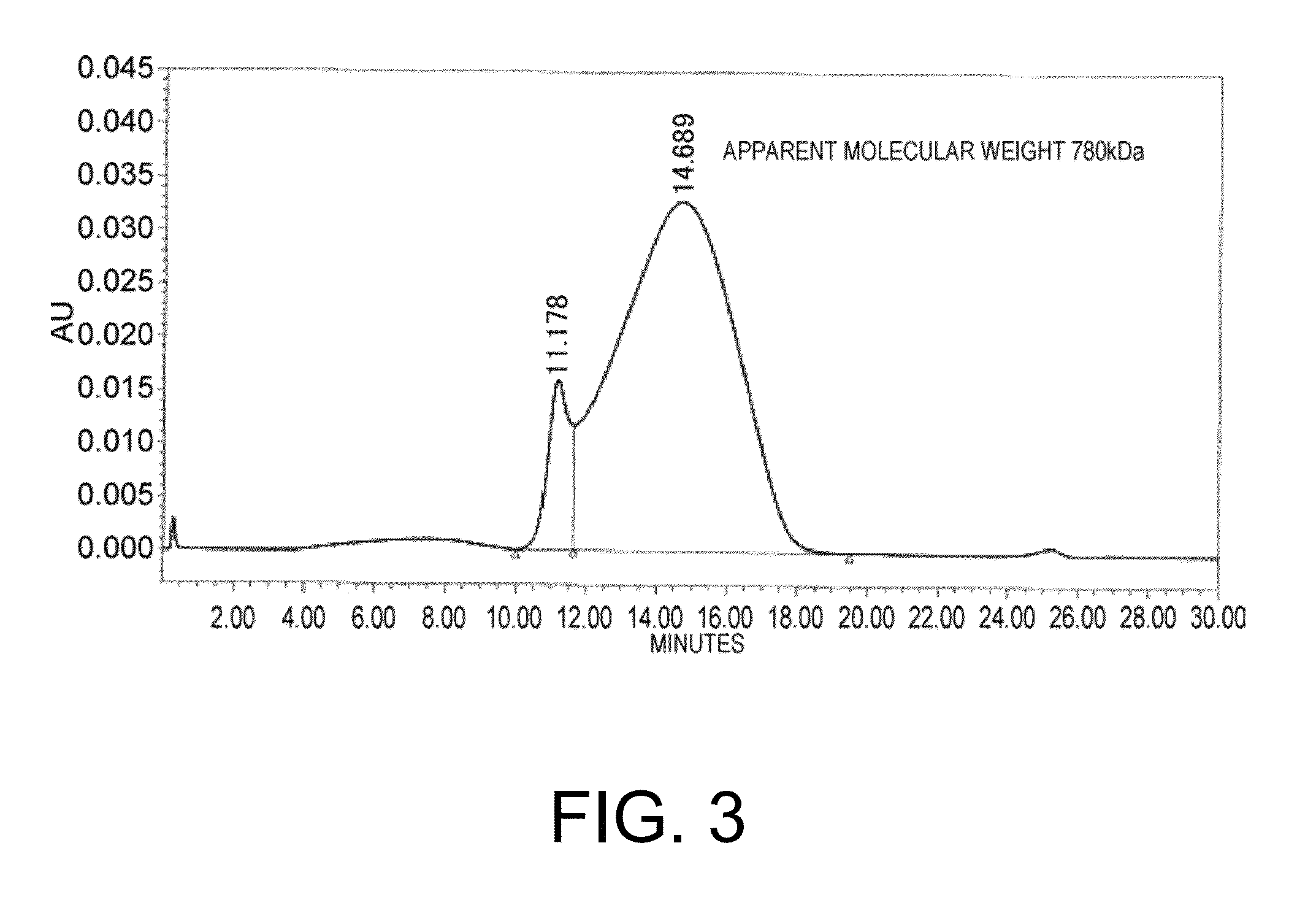Antigen-binding molecule for eliminating aggregated antigens
an antigen-binding molecule and aggregate technology, applied in the field of antigen-binding molecules for eliminating aggregated antigens from plasma, can solve the problems of inability to completely neutralize antigens with an amount of antibodies smaller than the amount of antigens, limitations in the reduction of the required antibody dose, and the development of al amyloidosis, etc., to achieve the elimination of proteins causing the disease, enhanced cytotoxicity, and increased antigen concentration
- Summary
- Abstract
- Description
- Claims
- Application Information
AI Technical Summary
Benefits of technology
Problems solved by technology
Method used
Image
Examples
example 1
Preparation of Antibodies that Show Calcium-Dependent Binding to Human IgA
(1-1) Preparation of MRA-hIgA, GC-hIgA-FLAG, and GC-hIgA-MYC
[0448]As human IgA, MRA-hIgA (heavy chain SEQ ID NO: 33; light chain SEQ ID NO: 36),
[0449]GC-hIgA-FLAG (heavy chain SEQ ID NO: 34; light chain SEQ ID NO: 37), and GC-hIgA-MYC (heavy chain SEQ ID NO: 35; light chain SEQ ID NO: 37) were prepared as follows.
Preparation of MRA-hIgA
[0450]MRA-hIgA which is a recombinant of human IgA (hereinafter, MRA-hIgA) was prepared as follows. A gene fragment encoding MRA-hIgA (heavy chain SEQ ID NO: 33; light chain SEQ ID NO: 36) was inserted into an animal cell expression vector. The constructed plasmid vector was transfected into FreeStyle 293 (Invitrogen) using 293Fectin (Invitrogen) along with an EBNA1-expressing gene. Then, the transfected cells were cultured at 37° C. under 8% CO2 to secrete the MRA-IgA protein into the culture supernatant. The protein was purified using ion exchange chromatography and gel filtra...
example 2
(2-1) Preparation of Aggregated hIgA
[0463]Aggregated hIgA was prepared using the crosslinking agent SPDP (N-Succinimidyl 3-(2-pyridyldithio)propionate, Thermo Scientific). GC-hIgA-MYC prepared in Example 1 was modified using SPDP, and hIgAs were cross-linked with each other by mixing a fraction that has not been treated subsequently with a fraction that has been treated under reducing conditions. After the crosslinking reaction, the macromolecular component was fractioned by gel filtration chromatography to obtain aggregated hIgA. The result of gel filtration chromatographic analysis on aggregated hIgA is shown in FIG. 3. The apparent molecular weight of the aggregated hIgA, calculated from the elution position of the molecular-weight marker, was 780 kDa. Since the elution peak is broad, aggregates of various sizes are conceivably being formed. As a comparison, GC-hIgA-FLAG that has not been treated with SPDP was used as the unaggregated hIgA.
(2-2) Assessment of the Obtained Antibod...
example 3
Assessment of Human IgA-Binding Antibodies for their Effect on Plasma Retention of Aggregated hIgA and Unaggregated hIgA Using Normal Mice
(3-1) In Vivo Test Using Normal Mice
[0467]Normal mice (C57BL / 6J mouse; Charles River Japan) were administered with unaggregated hIgA (prepared in Example 1) or aggregated hIgA (prepared in Example 2) alone or administered with an anti-hIgA antibody one day prior to administration of unaggregated hIgA or aggregated hIgA; and then they were assessed for the in vivo dynamics of hIgA and the anti-hIgA antibody. An anti-hIgA antibody, an unaggregated hIgA solution (300 μh / mL) and an aggregated hIgA solution (300 μg / mL) were administered at 10 mL / kg into the caudal vein. The anti-hIgA antibody used was GA2-IgG1 described above.
[0468]The concentration of human IgA was 300 μg / mL in all of the mixed solutions. Meanwhile, the anti-hIgA antibody concentration was 30 μg / mL (0.3 mg / kg), 100 μg / mL (1 mg / kg), or 300 μg / mL (3 mg / kg). When the anti-hIgA antibody c...
PUM
| Property | Measurement | Unit |
|---|---|---|
| pH | aaaaa | aaaaa |
| pH | aaaaa | aaaaa |
| concentration | aaaaa | aaaaa |
Abstract
Description
Claims
Application Information
 Login to View More
Login to View More - R&D
- Intellectual Property
- Life Sciences
- Materials
- Tech Scout
- Unparalleled Data Quality
- Higher Quality Content
- 60% Fewer Hallucinations
Browse by: Latest US Patents, China's latest patents, Technical Efficacy Thesaurus, Application Domain, Technology Topic, Popular Technical Reports.
© 2025 PatSnap. All rights reserved.Legal|Privacy policy|Modern Slavery Act Transparency Statement|Sitemap|About US| Contact US: help@patsnap.com



